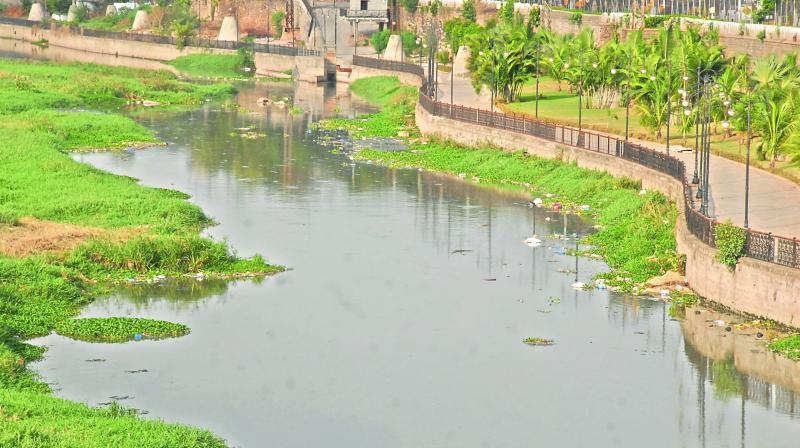Telangana: Musi river now a factory of drug-resistant germs

Hyderabad: The Musi river is becoming a serious environmental and health hazard as drugs from pharmaceutical companies, located in and around Hyderabad, are polluting the river water.
The contaminated Musi river joins the Krishna river which supplies water to 1.6 crore people in the districts of Nalgonda in Telangana and Krishna, Guntur, Prakasam and West Godavari in Andhra Pradesh.
The drug-contaminated water results in antibiotic-resistant bacteria in the environment and humans, which is a major health concern the world over. It also affects the aquatic ecosystem.
A recently published study by Dr Shashidhar and Ritu Gothwal of the civil engineering department of the Indian Institute of Technology-Hyderabad reported ‘exceptionally high concentrations' of fluoroquinolones class of antibiotics in the Musi river. The researchers repor-ted that concentrations of ciprofloxacin, ofloxacin, and norfloxacin were ‘frequently’ detected in the Musi water.
While ciprofloxacin was recorded at a whopping 5 milligrams per litre of the river's water, ofloxacin was recorded at 542.4ig/L and norfloxacin at 251ig/L.
Another study by res-earchers from the Univ-ersity of Gothenburg in Sweden has highlighted the urgent need for pollution control boards at state and central government level to review the functioning of effluent treatment plants that treat effluents from pharmaceutical companies.
Effluents from nearly 200 pharmaceutical co-mpanies get treated at the Patancheru effluent treatment plant (PETL). Treatment of effluents requires the presence of bacteria which break down the effluents. For this process to be effective, not just one but a wide variety of specialised bacteria have to be present.
However, when the researchers from the Swedish university took samples from PETL they found that the bacteria diversity in PETL, is very low and just a few types of bacteria, which could develop resistance to antibiotics in pharmaceutical effluents, dominated the bacterial composition.
This lack in bacterial diversity affects efficiency of the plant to treat effluents which are discharged into the Musi river after being treated. An indication of low efficiency of PETL is the presence of antibiotics in large quantities in the river.
When contacted by this newspaper, the Telangana State Pollution Control Board said that there was no drop in efficiency in the functioning of PETL. It provided a report of the performance evaluation of PETL, which showed parameters such as Biochemical Oxygen Demand, Total Dissolved Solids and heavy metals in the treated effluents to be within the limits prescribed by the Central Pollution Control Board. However, the parameters quoted by the pollution control board did not include the presence of antibiotics in the treated effluent and thus did not address the crucial issue.
Using biological methods to treat water ‘very dangerous’
The findings by the research scholars of IIT-Hyderabad into the pollution of the Musi river by pharmaceutical companies should alert pollution control bodies to the danger this poses to public health and the aquatic ecosystem.
Dr Shashidhar, who led the research that has exposed the antibiotics pollution in the Musi river, says that the age old technique of biologically treating industrial effluents that is being used in the Patancheru and Jeedimetla effluent treatment plants must be entirely done away with.
He said that due to the use of the biological method to treat effluents, effluent treatment plants have become ‘factories’ manufacturing drug resistant bacteria that end up in the environment. There are many alternative techniques for treating effluents, other than the biological method, that are being employed in developed nations, he said.
Dr Shashidhar also poi-nted to the lack of any st-andard set by the government to measure the ant-ibiotic presence in treated effluent, which gives no idea whether the pharmaceutical effluent has been treated or not. The lack of any standard also means that there are no legal implications if antibiotics are found in treated water let out into rivers.
Such standards exist in developed countries. The present parameters bei-ng used by the Central Pollution Control Board to monitor performance of effluent treatment plants do not give any idea regarding the presence of antibiotics in treated effluents.

